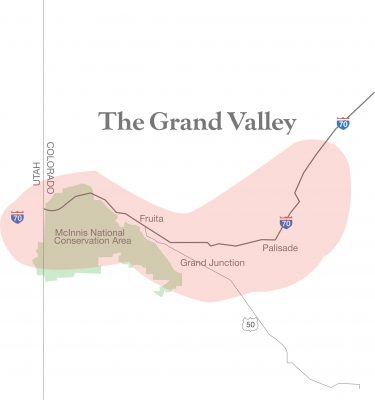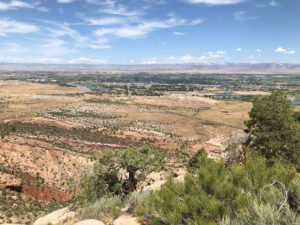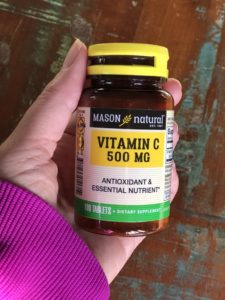Embracing the term “Grand Valley” as you consider a move to Grand Junction, Fruita, or Palisade
 As you embark on the adventure of moving to Grand Junction, Colorado like I did, you’ll quickly become familiar with the locals’ affectionate term for the area – the Grand Valley. Comprising the charming cities of Grand Junction, Palisade, and Fruita, the Grand Valley is a region unlike any other. It’s defined by its unique geographical features, rich agricultural heritage, and a vibrant community spirit.
As you embark on the adventure of moving to Grand Junction, Colorado like I did, you’ll quickly become familiar with the locals’ affectionate term for the area – the Grand Valley. Comprising the charming cities of Grand Junction, Palisade, and Fruita, the Grand Valley is a region unlike any other. It’s defined by its unique geographical features, rich agricultural heritage, and a vibrant community spirit.
The Grand Valley owes its title to its strategic geographical location. Bounded by the Grand Mesa (elevation: 11,332′), the Colorado National Monument (4,000-7,000’ elevation), and the Book Cliff Mountains (starting at 5,500’ elevation). This three-sided valley is a natural wonder. The Book Cliffs continue into Utah and rise to over 8,500’.
The Grand Mesa, the world’s largest flat-top mountain, stretches over 500 square miles and has over 300 lakes and a variety of lodges and cabins. Conversely, the Colorado National Monument showcases stunning red rock monoliths and breathtaking canyon views. A great place to go for a drive or take advantage of the many hiking trials. The Book Cliff Mountains complete the panorama, extending over 250 miles into Utah. I am constantly in awe at the diversity of eco systems and opportunities to enjoy so much in the Grand Valley.
You can learn more about the geology and paleontology of the area by visiting the Museums of Western Colorado.
Colorado River Connection
The lifeblood of the valley, the Colorado River, weaves through this picturesque landscape, contributing to its geographical and recreational significance. The term “Grand” in Grand Valley and Grand Junction itself stems from the Colorado River, formerly known as the Grand River, and the confluence with the Gunnison River at the heart of the valley.
Agricultural Abundance
Fertile soil is the heartbeat of the Grand Valley, making it an agricultural haven. Orchards, vineyards, and vegetable farms thrive here, producing some of the finest fruits and vegetables. Literally some of the best fruit and produce you have ever tasted comes out of the Grand Valley. The farm-to-table dining scene, especially the renowned Palisade peaches, adds a delightful flavor to the culinary experience. Don’t get me started on the Palisade peaches, oh my! Learn more by reading our Palisade post.
Scenic Diversity
The valley is a visual feast, offering a diverse landscape within a short drive. From the high desert red rock monolith formations to the alpine feel of the Grand Mesa and the classic Colorado mountains. The region captivates with its varied beauty, all within a 45-minute radius. You can literally ski at Powderhorn Mountain Resort in the morning and drive back down into the Grand Valley for a game of afternoon golf. How cool is that! The change in elevation makes a big difference. Check out my post on how to avoid altitude sickness.

Taken from the airplane as we left GJT airport
Grand Junction’s Central Role
Grand Junction, the largest urban center in the Grand Valley, serves as a hub and reference point for the entire region. Described as the “biggest small town.” Grand Junction seamlessly blends big city amenities with small-town charm, creating a unique and welcoming atmosphere. Many of the Mesa County service offices are in Grand Junction, Colorado.
The Happy Valley
I met a gentleman at the downtown Grand Junction Farmers Market and told him my relocation story from Minnesota. He said, “Welcome to the Happy Valley”. I said, “isn’t it welcome to the Grand Valley?” He responded with “only until you truly understand how special this place is”.
Historical Roots
The term “Grand Valley” has deep historical roots, dating back to the late 19th century when the area witnessed significant settlement and development. Shaping its identity and character. According to Wikipedia, “George Addison Crawford (1827–91) purchased a plot of land. On July 22, 1882, he incorporated the town of Grand Junction. He planted Colorado’s first vineyard near Palisade, Colorado, causing the area to become known as the Colorado Wine Country.” The name “Grand Valley” has been associated with the area since the mid-nineteenth century.
Cultural Emblem
Over time, “Grand Valley” has evolved into more than just a geographical term; it embodies the cultural identity of the region. The name reflects the unique combination of geography, history, and community that defines this hidden gem in Colorado.
As you immerse yourself in the Grand Valley’s wonders, from its geographical marvels to its agricultural bounty and vibrant community, you’ll come to understand why locals cherish it and proudly call it home.
Welcome to the Grand Valley, where every corner tells a story, and every day is an opportunity to embrace the grandeur that surrounds you. If you’re planning a trip to the Grand Valley to consider a possible relocation, I’d love to help you make the most of your time while you’re in town. Call me for a tour!
Grand Valley Overlooks

Photo taken from a McInnis Canyons trail overlooking Fruita
The first place that comes to mind to see much of the Grand Valley is to drive Rim Rock Drive in the Colorado National Monument. You can stop along the way at the pullouts and get spectacular views of the canyons and the whole valley as you look East towards the Book Cliff Mountains. The Palisade Rim Trail provides a wonderful elevated view of Palisade. Or if you are brave, climb Mount Garfield!
You can start at the trailhead for Dinosaur Hill in Fruita. There’s a picnic spot at the top with panoramic views of the Grand Valley and interpretive signs along the way about the dinosaurs found on that site along the Colorado River.
Learn more about the area by visiting our posts about Grand Junction, Fruita and Palisade. Plus monthly average temps in our weather post!
Hot Property Listings and MLS Search: paul.christireece.com
Call or text me with your questions! 612-306-9558
Connect with me on LinkedIn
Paul Aspelin, Realtor®
GRI, SRES®, CNE
The Christi Reece Group
© 2023 Paul Aspelin, Realtor® MovetoGrandJunction.com. Copyright protected. All Rights Reserved.








